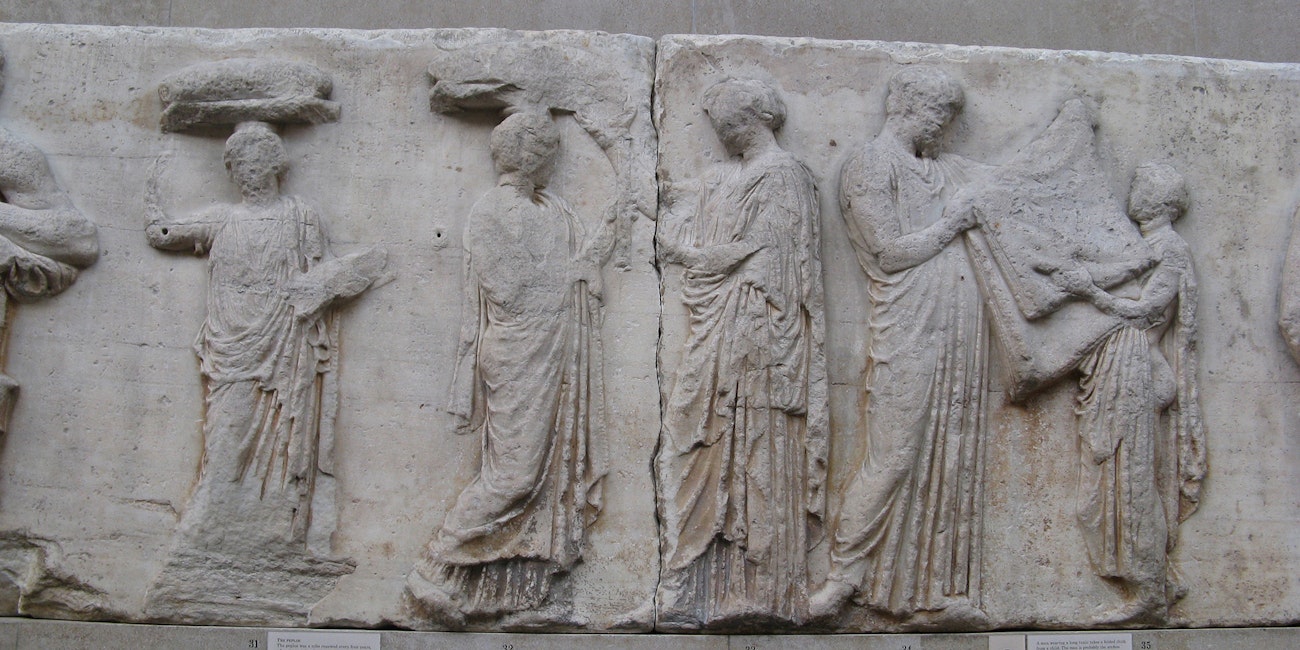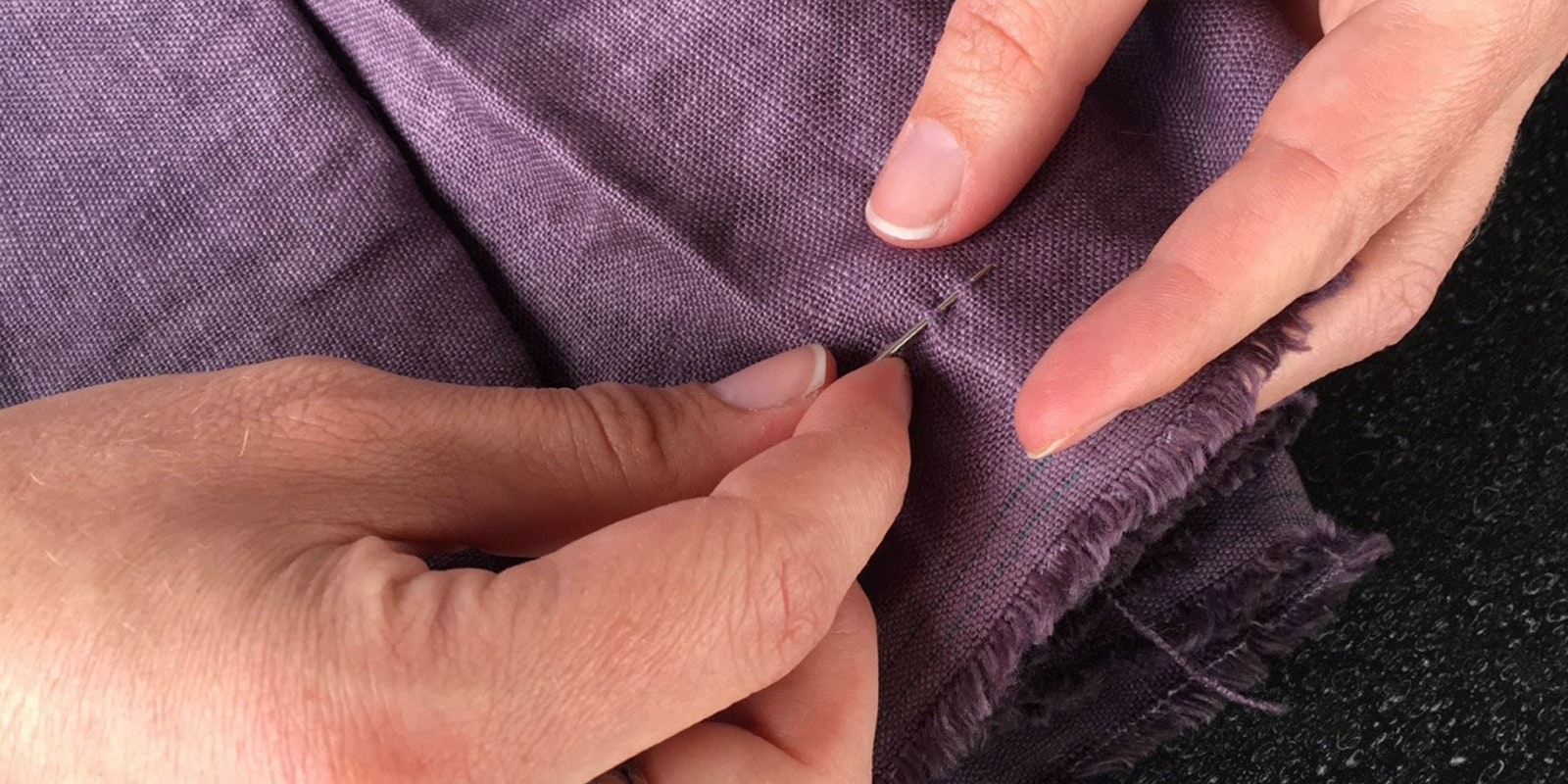“Convenience textiles” and the ready-to-wear, practically disposable clothing we know today didn’t exist before the 20th century. In fact, for much of human history, we might more accurately think of fabrics as “inconvenience textiles,” because everything was done by hand. Someone had to harvest fibers from plants or animals, prepare fibers for spinning, spin fibers into yarn, weave yarn into cloth, and stitch the garment. Or prepare fibers for processing into felt or felt-like sheets, such as wool felt, tapa cloth in Tonga, or cedar bark textiles in the Pacific Northwest. Dyeing and surface decoration could happen in there, too, at almost any point in the process. People could use hand tools for some tasks, but there were no mechanized textile tools until the late 18th century.
Around the world, women typically handled textile production for their families because they could fit the work in around other tasks, such as caring for children or preparing food. Yes, ladies have always been expected to multitask! Clothmaking became so identified with females that the English language still contains two gendered phrases connected with spinning: maternal relatives come from the “distaff” side of the family, and unmarried women used to be called “spinsters.”
Historical records from the distant past don’t say much about women, and they say even less about women’s everyday lives. Yet textiles do pop up every now and then. In this series of posts, I’ll share tidbits about textiles and the women who made them, gathered from my years of teaching early world history at the college level. I’ll focus mostly on European and Mediterranean cultures (the ones I know best), and on weaving and spinning until knitting emerged in the 13th century and crochet developed in the 19th century.
Women’s Work, Part 1: A Paradoxical Deity
Athena, patroness of the city-state Athens, had an unusual job description: goddess of war strategy, wisdom, justice, and crafts, especially weaving. This goddess, who never married, helped Zeus defend Olympus from giants, Titans, and other nasties; she guided numerous male heroes in their adventures; and she promoted weaving among human women. Athena may not be the only goddess who oversaw war and weaving: Plato mentioned that inhabitants of an Egyptian town worshipped a goddess called Neith as their local version of Athena. Scholar Miriam Dexter has proposed that, at some point, Athena was a solar deity, since she shared attributes of the Baltic sun goddess Saulė, who also patronized weaving.
 Part of the central section of the east frieze of the Parthenon. From left to right: Two girls carrying stools, the priestess of Athena, the Archon Basileus and a child holding the peplos. Photo courtesy of Wikipedia Commons
Part of the central section of the east frieze of the Parthenon. From left to right: Two girls carrying stools, the priestess of Athena, the Archon Basileus and a child holding the peplos. Photo courtesy of Wikipedia Commons
You probably know the (Roman) story of Arachne, a human woman turned into a spider for daring to challenge the goddess to a weaving contest. Moral of that story: be good, but not too good! Athena also either made clothing for the first human woman, Pandora, or enhanced Pandora’s charms by teaching her to weave. In the most obscure Athena story, the daughters of Kekrops, the first king of Athens, invented weaving—they wove clothing for the city’s people and established festivals to honor the goddess. (Two of the three daughters also disobeyed Athena and died horribly; they’re more famous for their deaths than for their crafts.)
As patron goddess of Athens, Athena had additional duties, and they make an even odder collection. She protected the city-state militarily and enforced its code of sexual purity. Athens thanked her for patronage in the mid-5th century BCE by rebuilding her temple on the Acropolis and commissioning a 30-foot statue of her, known today as the Athena Promachos. Every 4 years, Athenians put on a spectacular festival called the Panathenaia, which featured athletic games, sacrifices, and a ritual dressing of the Athena Promachos in a specially woven garment called a peplos. Many scholars interpret the relief carvings on the Parthenon, Athena’s temple, as illustrations of Athena’s contradictory roles: defend the city-state in battle, uphold her father Zeus’s authority among the gods, and encourage young women to marry and support their new households.
Carvings on the outside showed scenes from Athena’s life, including her participation in some famous battles—in fact, she helped defend the city-state when Amazon warriors attacked. Although fighting was a man’s job, Athena did it in a way that helped her city-state, while Amazons (who never married and spent their lives at war) damaged the city-state.
How could a virgin warrior goddess promote marriage? Athena also encouraged crafts, especially weaving. Inside the Parthenon, carvings showed this link: wives, unmarried women, and young girls walked calmly toward the temple in the Panathenaic procession. Athena’s priestesses, along with specially chosen girls, spent 9 months before each festival preparing the goddess’s new peplos. Their work symbolized the tasks of a good wife and mother.
Festival worshippers would see the external carvings of frenzied battle, then the internal artwork of an orderly religious ritual, and then they’d see the gigantic statue of Athena, dressed for battle. Human men and women had important but different roles to play in the city-state. Only a goddess could play both parts.
Resources
- Blundell, Sue. “Marriage and the Maiden: Narratives on the Parthenon.” In The Sacred and the Feminine in Ancient Greece, ed. Sue Blundell and Margaret Williamson. London: Routledge, 1998.
- Kearns, Emily. “The Nature of Heroines.” In The Sacred and the Feminine in Ancient Greece, ed. Sue Blundell and Margaret Williamson. London: Routledge, 1998.
Deb Garish is a former content manager for PieceWork magazine.
Originally published October 26, 2017; updated March 6, 2023.

